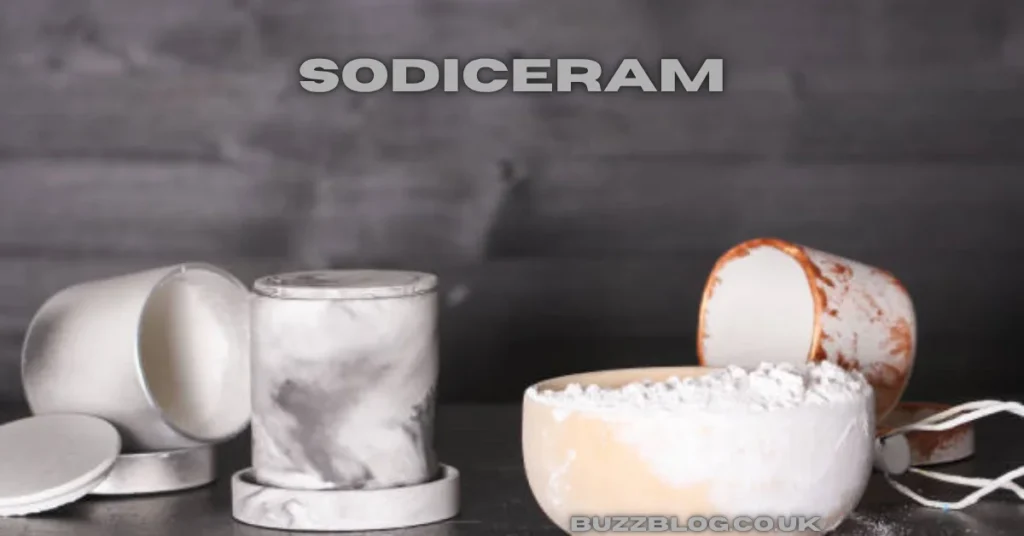Ceramics have come a long way since they were first used for pots and pans. But now, there’s a new player on the scene that’s shaking things up — Sodiceram. It might sound like a fancy sci-fi term, but this innovative material is making waves in industries ranging from aerospace to medical technology.
So, what’s the big deal about Sodiceram? Grab your favorite cup of coffee (hopefully ceramic!) and let’s dive in.
What is Sodiceram?
Sodiceram isn’t your everyday pottery clay. It’s a high-performance technical ceramic designed to withstand extreme conditions while maintaining incredible precision and stability.
Whether it’s handling scorching temperatures or resisting corrosive chemicals, this material plays hardball.
The Origin of the Name
The term “Sodiceram” likely stems from a combination of (Sodi) and “ceramic” (ceram). That gives us a hint: it might involve specific chemical compositions that enhance its performance compared to standard ceramics.
Sodiceram vs Traditional Ceramics
While regular ceramics are great for making dishes or decorative tiles, they fall short in high-stakes environments like medical implants or rocket engines. steps in where traditional ceramics tap out.
Key Features of Sodiceram
Let’s break down why engineers, designers, and innovators are singing its praises.
High Thermal Resistance
We’re talking about withstand-a-blowtorch levels of heat. Sodiceram retains its integrity even in extreme temperatures — perfect for kilns, jet engines, and nuclear plants.
Chemical Stability
In labs or factories, corrosive materials are everywhere. Sodiceram remains unfazed. It doesn’t corrode, react, or break down easily, making it ideal for sensitive environments).
Applications of Sodiceram
You might not spot it in your kitchen, but it’s probably saving lives or launching satellites somewhere.
Heat-Intensive Machinery
Furnaces, power plants, and engines all use materials that need to stay strong when things get hot. Sodiceram fits right in.
Biocompatible and Non-Reactive Surfaces
Surgical tools, implantable devices, and lab equipment demand zero reaction with human tissue. That’s where Sodiceram’s chemical stability comes into play.
Aerospace and Defense
Satellites, drones, and even space shuttles need materials that are both lightweight and tough. Sodiceram delivers both, helping reduce fuel costs while improving durability.
Why Sodiceram Is Gaining Popularity
Unlike plastics or certain metals, degrade quickly, or leave micro-residue. It’s a green thumbs-up from environmentalists.
Innovation in Design
Thanks to modern fabrication techniques, can be shaped, molded, and patterned with microscopic precision — opening doors for futuristic designs.
Not all ceramics are created equal. Let’s see how stacks up.
Ceramic Matrix Composites (CMCs)
CMCs are strong but complex.Sodiceram delivers similar strength while potentially simplifying the manufacturing process.
Traditional Porcelain
Porcelain is beautiful, but it’s fragile. Drop a plate, and it shatters. ? It would rather bounce back than break.
The Future of Sodiceram
Where’s this superstar ceramic headed next?
Market Trends
With demand surging in tech, aerospace, and energy, is becoming a hot commodity in global markets.
Ongoing Research
Scientists are exploring how to enhance its properties even further, including conductivity, transparency, and more.
How to Work With Sodiceram
Whether you’re an engineer or artist, working with this material requires finesse.
Fabrication Techniques
Methods like 3D ceramic printing, CNC machining, and precision molding are becoming increasingly compatible.
Best Practices
Keep it clean, handle with care, and ensure proper sintering (a process where the ceramic is hardened by heat). That’s the key to unlocking its full potential.
Conclusion
Sodiceram isn’t just another buzzword — it’s the next evolution in ceramic engineering. Strong, stable, and seriously versatile, it’s ready to take on challenges that traditional materials just can’t handle.
From space exploration to life-saving surgery, this powerhouse material proves that sometimes, the most revolutionary technologies come from the ground beneath our feet — just a bit more refined.
FAQs
1. What industries benefit most from Sodiceram?
Industries like aerospace, medical technology, and heavy manufacturing are some of the top users of.
2. Is Sodiceram safe for medical use?
Yes! Because it doesn’t react with bodily tissues or fluids, it’s well-suited for medical instruments and implants.
3. Can Sodiceram be recycled?
Technically, yes. While it doesn’t decompose like organic material, it can be reused or reprocessed in certain applications.
It’s highly stress-resistant and doesn’t crack easily under mechanical pressure or thermal fluctuations.
